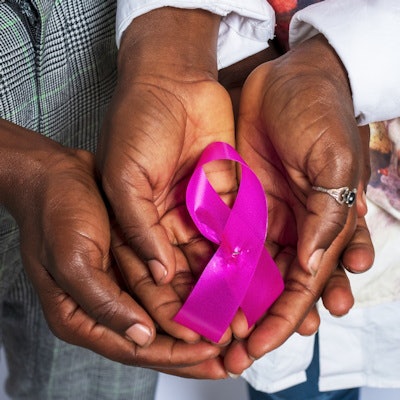
Persistent low breast cancer screening volumes and racial disparities in mammography were seen in California during the COVID-19 pandemic, according to research published August 6 in JAMA Oncology.
Researchers led by Dr. Ana Velazquez from the University of California, San Francisco found that Black and Latinx women experienced the largest drop-offs in the volume and proportion of mammograms completed.
"We hypothesize that these differences by race and ethnicity are multilevel and reflect the effect of worry, competing priorities, limited access, and disproportionate burden and socioeconomic impact of COVID-19 in Latinx and Black communities," Velazquez and colleagues wrote.
Previous research suggests the pandemic negatively influenced cancer screening and led to a deficit of about 3.9 million breast cancer screenings among U.S. adults. In San Francisco, those in low-income neighborhoods disproportionately affected by COVID-19 tend to have a higher breast cancer stage at diagnosis.
The researchers wanted to look at the association between COVID-19 and breast cancer screening in a safety-net hospital in San Francisco. They gathered data from a total of 9,291 screening mammograms performed from January 1, 2019, to January 31, 2021. Out of these, 5,662 were performed in 2019, with an average of 472 mammograms per month, and 3,385 in 2020, three-fifths of the 2019 volume.
During the first stay-at-home order from February to May 2020, the number of screening mammograms decreased to 194 in March and to 0 in April. The number of missed appointments meanwhile increased during 2020, with 127 (40%) of 321 missed in March, compared with 585 (21%) of 2,764 from September 2019 to January 2020.
During the reopening phase from June to November 2020, the number of screening mammograms increased but remained below the 2019 average, except in October.
However, screening mammography volumes declined during the second stay-at-home order. The hospital's mobile mammography unit volume decreased from 831 during 2019 to 248 in 2020, with no mammograms between April and June 2020.
The study authors also found that the proportion of completed mammograms was lowest among Black women at all time points, younger women during the first stay-at-home order, and women who were 70 or older during the second stay-at-home order.
The volume and proportion of completed mammograms decreased across racial and ethnic groups during the second stay-at-home order compared with the time before the pandemic.
| Decreases in completed mammograms before and during second stay-at-home order | ||
| Prepandemic | Pandemic | |
| White | 71% | 61% |
| Black | 59% | 38% |
| Latinx | 81% | 61% |
| Asian | 87% | 72% |
Among age groups during the second stay-at-home order, women who were 70 or older experienced the greatest drop -- from 77% to 54% -- in the percentage of completed screening exams.
"While the study findings correlate with our initial hypothesis, I was definitely surprised by the profound decrease in volume we observed," Velazquez told AuntMinnie.com. "As a clinician and oncologist, I worry about the long-term effect the pandemic will have on cancer stage at diagnosis and potential outcomes."
The team said resource and staff reallocation from preventive health community-based efforts may have contributed to these disparities, citing lower patient volumes for the hospital's mobile unit. Velazquez added that outreach efforts to include preventive and primary care could help, such as expanding the use of mobile mammography units and increasing education regarding the indications and safety of screening mammograms.
"In my opinion, this will be best achieved by partnering, supporting, and investing in community-based organizations that understand the needs of patients, what barriers limit their access to healthcare, and where to meet them," she said.
With the delta variant of the coronavirus spreading, Velazquez said breast cancer screening facilities can consider the following measures:
- Emphasize in all patient interactions the use of safety protocols to minimize patient exposures to COVID-19
- Implement screening questionnaires prior to visits
- Implement reminder and outreach calls to patients prior to their appointments
- Continuing safety, distancing, and cleaning protocols
- Promote and, if possible, require vaccination among healthcare staff
- Promote vaccination and offer vaccination to patients in their screening facilities




















